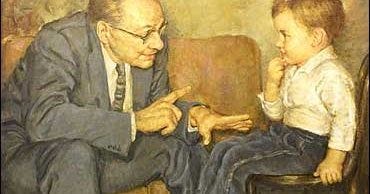The Monster Study
In 1939, at the Iowa Soldiers' Orphans' Home, a blatantly unethical experiment was conducted on 22 orphaned children with the goal of examining the "diagnosogenic theory" of stuttering. The theory, developed by Dr. Wendell Johnson, a psychologist and speech disorder researcher who himself suffered from stuttering, claimed that labeling a child as a "stutterer" would deteriorate their speech and cause them to stutter. Johnson argued that "stuttering begins not in the child's mouth, but in the parent's ear." In other words, he blamed parents for stuttering. He believed that well-meaning parents misinterpreted normal speech development as a problem requiring correction, causing them to put pressure on their child, who would then develop anxiety and begin to stutter.
To test this theory, Johnson assigned his student, Mary Tudor, to conduct an experiment at an orphanage.
What they did:
The researchers told the orphanage staff they were there to provide speech therapy.
They took 22 children: 10 who already stuttered and 12 who did not. The children's ages ranged from 5 to 15.
They divided the children into four groups: one group of stutterers and one group of non-stutterers, who were told they spoke normally; and two additional groups—one of stutterers and one of non-stutterers—who were told their speech was defective.
They then provided "negative therapy" to children labeled as stutterers, designed to make them self-conscious about their speech. They criticized their speech and told them to wait before speaking and to speak only if they knew they could speak correctly.
They also instructed the orphanage staff to treat the children the same way. In other words, the abuse was significant.
The experiment failed (PDF) because it did not prove Johnson's theory: none of the children became stutterers, and the stutterers who were told their condition would improve continued to stutter.
However, the experiment had ongoing negative consequences for many children in the experimental group.
Tudor noted that the children quickly responded to negative comments, and their speech deteriorated throughout the experiment. Some became more introverted, others suffered bullying from surrounding children due to difficulty speaking, and many experienced a decline in academic performance. Some suffered from psychological problems and speech difficulties (not stuttering, but lack of confidence and fear of speaking) that lasted throughout their lives. These were, of course, children who were already in a very vulnerable situation and likely remained so, making it difficult to isolate the direct results of the experiment from the rest of the children's less-than-beneficial (to put it mildly) environment.
The children were never warned they were part of an experiment, and many only discovered this decades later. In 2007, the state of Iowa compensated seven surviving orphans with $925,000 for the damage caused to them.
Experiments like the Monster Study are a thing of the past, thanks to strict ethical standards that prevent such practices. Nevertheless, this research serves as a good reminder of how researchers in the past tended to place all blame on parents for their children's difficulties. Today (albeit relatively slowly), more and more researchers recognize that child development is a much more complex process influenced by many factors. It is increasingly clear that there is rarely a single factor alone that leads to a specific developmental outcome.





